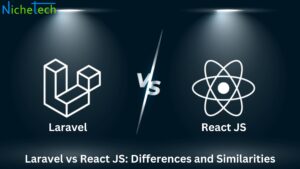When it comes to developing web applications in PHP, choosing the right framework is crucial for the success of your project. Among the various PHP frameworks available, CodeIgniter and Laravel are two of the most popular choices. Each framework has its strengths and weaknesses, and the decision on which to use depends on various factors, including the specific requirements of your project, your team’s expertise, and your long-term goals. In this blog, we’ll explore the key differences between CodeIgniter and Laravel and help you decide which one might be the best fit for your next web development project.
1. Overview of CodeIgniter and Laravel
CodeIgniter: A Lightweight, Simple Framework
CodeIgniter is a lightweight PHP framework known for its simplicity and ease of use. It was initially released in 2006, making it one of the oldest PHP frameworks still in use today. CodeIgniter is designed to provide a simple and elegant toolkit for developers who need a fast and straightforward solution to build dynamic web applications.
Key Features of CodeIgniter:
Lightweight and Fast: Minimalistic design with a small footprint.
Easy to Learn: Simple and well-documented, making it accessible for beginners.
Flexible and Less Opinionated: Offers flexibility in development with fewer conventions and rules.
Strong Performance: Optimized for speed, making it suitable for small to medium-sized projects.
Laravel: A Feature-Rich, Modern Framework
Laravel, on the other hand, is a more modern PHP framework that was introduced in 2011. It has quickly gained popularity due to its comprehensive feature set, elegant syntax, and strong community support. Laravel is designed to handle complex applications with ease and is often used for large-scale web development projects.
Key Features of Laravel:
Rich Ecosystem: Comes with a powerful ecosystem of tools, including Eloquent ORM, Blade templating engine, and Artisan command-line tool.
Advanced Features: Supports advanced features such as routing, middleware, queues, and real-time event broadcasting.
Strong Community Support: Extensive documentation and a large, active community.
Modern Development Practices: Adheres to modern development practices, such as dependency injection, RESTful resource controllers, and test-driven development (TDD).
2. Key Differences Between CodeIgniter and Laravel
a. Learning Curve and Ease of Use
CodeIgniter: CodeIgniter is known for its gentle learning curve. Its simplicity and clear documentation make it an excellent choice for beginners or developers looking for a quick and straightforward solution. With fewer built-in tools and features, developers have more freedom to structure their code as they see fit.
Laravel: Laravel has a steeper learning curve compared to CodeIgniter, especially for beginners. Its rich feature set and use of modern development practices require more time to master. However, once learned, Laravel’s syntax is elegant, and the framework provides a lot of built-in functionality that can speed up development.
b. Performance and Speed
CodeIgniter: CodeIgniter is lightweight, making it one of the fastest PHP frameworks available. It has minimal overhead and is optimized for speed, which is beneficial for small to medium-sized applications where performance is critical.
Laravel: Laravel is more feature-rich, which can add some overhead and affect performance. However, Laravel is still highly performant and suitable for most applications. For projects requiring extensive features and scalability, the slight trade-off in performance is often justified by the additional functionality Laravel provides.
c. Built-In Features and Extensibility
CodeIgniter: CodeIgniter offers basic tools and libraries, which makes it easy to use but somewhat limited in terms of built-in functionality. It is less opinionated, allowing developers to integrate third-party libraries or create custom solutions. This flexibility is ideal for developers who prefer a more hands-on approach to adding functionality.
Laravel: Laravel comes with a comprehensive set of built-in tools and features out of the box, such as Eloquent ORM for database management, Blade templating engine, and Laravel Mix for asset compilation. This rich feature set makes it highly extensible and reduces the need for third-party integrations, providing a robust framework for developing complex applications.
d. Community Support and Documentation
CodeIgniter: While CodeIgniter has a smaller community compared to Laravel, it still has a solid base of developers who contribute to its forums and documentation. The framework’s longevity has resulted in a wealth of resources and tutorials available online.
Laravel: Laravel boasts one of the largest and most active communities among PHP frameworks. This means more frequent updates, extensive documentation, numerous tutorials, and a wide array of third-party packages and extensions. The strong community support is a significant advantage for developers looking for resources or facing issues during development.
e. Security Features
CodeIgniter: CodeIgniter provides basic security features, such as built-in protection against common threats like SQL injection, cross-site scripting (XSS), and cross-site request forgery (CSRF). However, developers may need to implement additional security measures depending on their application requirements.
Laravel: Laravel offers robust security features out of the box, including CSRF protection, password hashing, encryption, and protection against SQL injection. Laravel’s advanced security features make it a preferred choice for applications where data security is a top priority.
3. Which Framework is Right for You?
Choosing between CodeIgniter and Laravel depends largely on the specific needs of your project and your team’s expertise:
Choose CodeIgniter If:
You are working on a small to medium-sized project with straightforward requirements.
You need a lightweight framework that prioritizes speed and performance.
You prefer a flexible and less opinionated framework that allows you to structure your application as you see fit.
You or your team are beginners in PHP development and need a framework with a gentle learning curve.
Choose Laravel If:
You are working on a medium to large-scale project that requires a robust, feature-rich framework.
You need built-in tools and features that streamline development and reduce the need for third-party integrations.
You value a modern approach to web development and are looking to implement best practices like TDD, RESTful API development, and modular programming.
You require strong security features and need to comply with strict data protection regulations.
You want to leverage a large, active community for support, third-party packages, and continuous improvement.







